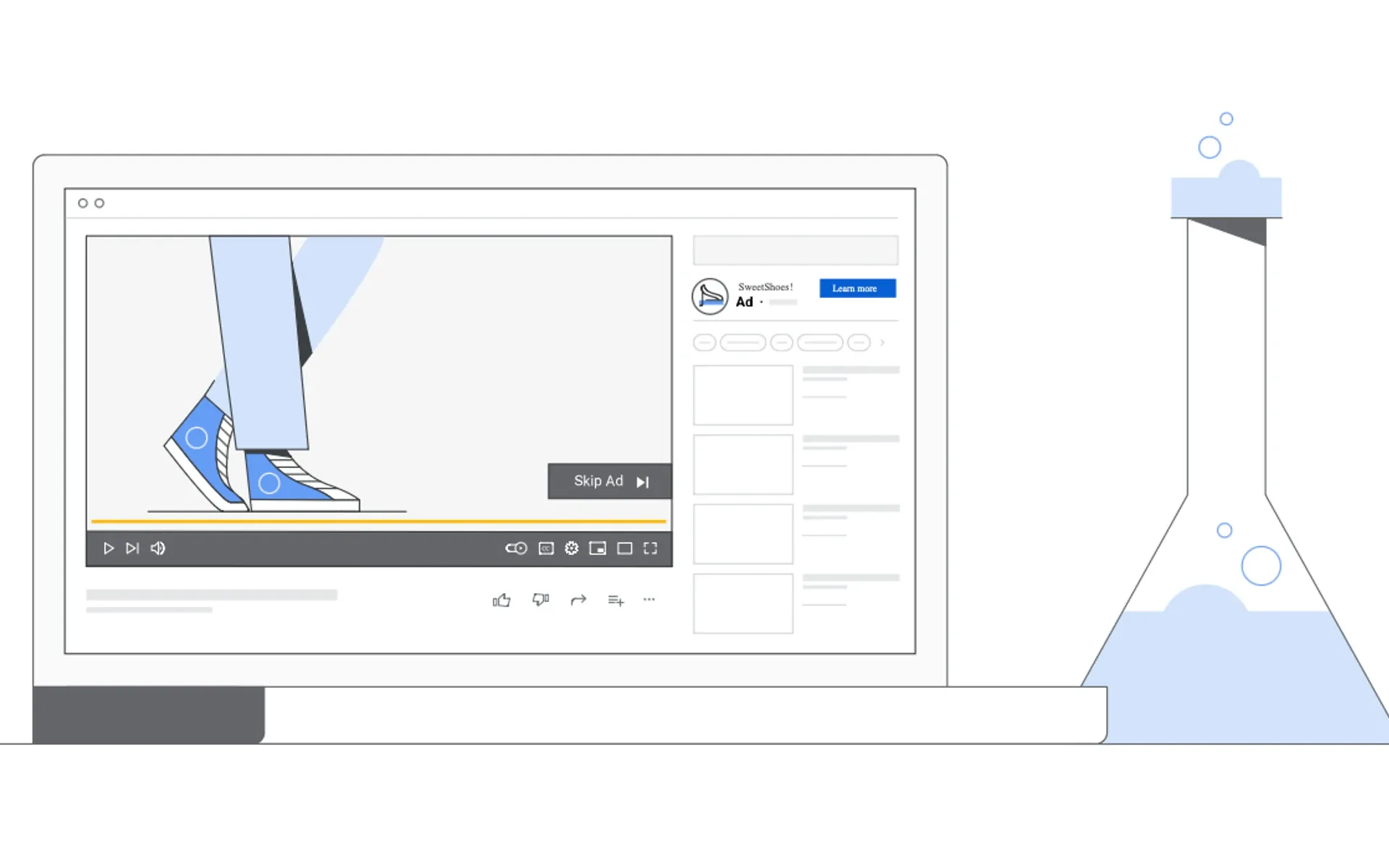Google Ads simplifies Video Experiments to boost creative performance
New feature streamlines setup for Video consideration and reach experiments, enabling data-driven optimization of YouTube ad creative.

Google Ads has unveiled a new feature that simplifies the process of setting up Video consideration and reach experiments, allowing advertisers to measure the impact of different creative variations on campaign performance more efficiently. This development, announced on October 16, 2024, aims to help marketers make data-driven decisions to optimize their video ad creative on YouTube.
Key features of the new Video Experiments
Streamlined Setup Process
The new Video experiments feature offers a streamlined setup process that significantly reduces the time and effort required to launch creative tests. Advertisers can now:
- Choose an existing campaign as the control arm
- Automatically create a duplicate for the treatment arm
- Add or remove assets in the treatment arm to test different creative variations
This simplified approach allows marketers to quickly set up experiments and start gathering insights into which version of their campaign drives better results.
Flexible confidence intervals
One of the notable advantages of the new Video experiments is the introduction of flexible confidence intervals. This feature enables advertisers to:
- Start seeing directional results within days
- Gain increasing confidence in results over time
- Achieve up to 95% statistical significance
The flexibility in confidence intervals allows marketers to make quicker decisions based on early data while also providing the option to wait for more statistically robust results.
Accurate results through improved design
Google Ads has designed the asset tests in Video experiments to help advertisers avoid setup errors, ensuring more accurate results from the outset. This improvement addresses a common challenge in A/B testing and helps marketers trust the data they receive.
Measurable metrics and insights
The new Video experiments feature allows advertisers to measure the incremental impact of different video assets on various key performance indicators, including:
- Brand lift
- Conversions
- Clicks
- View rate
- Cost-per-view
- Cost-per-conversion
This comprehensive set of metrics enables marketers to gain a holistic understanding of how their creative variations affect both brand perception and performance metrics.
Availability and campaign types
According to the announcement, the new Video experiments feature is available for:
- Video Reach Campaigns
- Video View Campaigns
For advertisers requiring more advanced customization or experiments with more than two arms, Google Ads continues to offer a custom experiments option.
How Video Experiments work
To create a video experiment, advertisers follow these steps:
- Set up two to four different groups (experiment arms)
- Choose the campaigns to include in the experiment, each with a different video ad
- Select a success metric to measure and compare the performance of the campaigns
Available success metrics include:
- Absolute brand lift (not available in Demand Gen beta)
- Click-through rate (CTR)
- Conversion rate
- Cost per conversion
- Cost per click (CPC)
- Cost-per-thousand impressions (CPM)
- Cost per view (CPV)
- Video viewing rate
Best practices for Video Experiments
To maximize the effectiveness of video experiments, Google Ads recommends:
- Starting with a clear hypothesis tied to the overall campaign goal
- Creating at least two video campaigns with different creatives before setting up an experiment
- Using the same settings (audiences, bids, ad formats) in each campaign to isolate the impact of creative variations
- Considering Brand Lift measurement, which may require contacting a Google account representative
Interpreting results
Google Ads provides two types of results for video experiments:
- Directional Results: Available as early as 70% confidence, allowing for quicker decision-making
- Conclusive Results: Achieved at 95% confidence, providing more statistically robust insights
Advertisers can choose to act on directional results or wait for conclusive results based on their specific needs and time constraints.
Ending Video Experiments
When an experiment is running, traffic is split evenly between the campaigns. To make changes to campaigns or return to previous traffic distribution levels, advertisers should end the experiment by following these steps:
- Navigate to the Experiments section in Google Ads
- Select Video experiments
- Find the desired experiment
- Click "End experiment"
Implications for advertisers
The introduction of simplified Video experiments represents a significant advancement for advertisers looking to optimize their YouTube video campaigns. By reducing the complexity of setting up and running creative tests, Google Ads is enabling marketers to:
- Iterate more quickly on creative concepts
- Make data-driven decisions about video ad performance
- Improve the overall effectiveness of their YouTube advertising efforts
As video content continues to play a crucial role in digital marketing strategies, this new feature provides advertisers with a powerful tool to refine their approach and maximize the impact of their video ads on YouTube.
Key Facts
- Announcement Date: October 16, 2024
- Feature Name: Simplified Video experiments
- Available for: Video Reach Campaigns and Video View Campaigns
- Key Benefits:
- Streamlined experiment setup
- Flexible confidence intervals (70% to 95%)
- Improved accuracy in results
- Comprehensive performance metrics
- Success Metrics: Brand lift, conversions, clicks, view rate, cost-per-view, cost-per-conversion, and more
- Result Types: Directional (70-80% confidence) and Conclusive (95% confidence)

